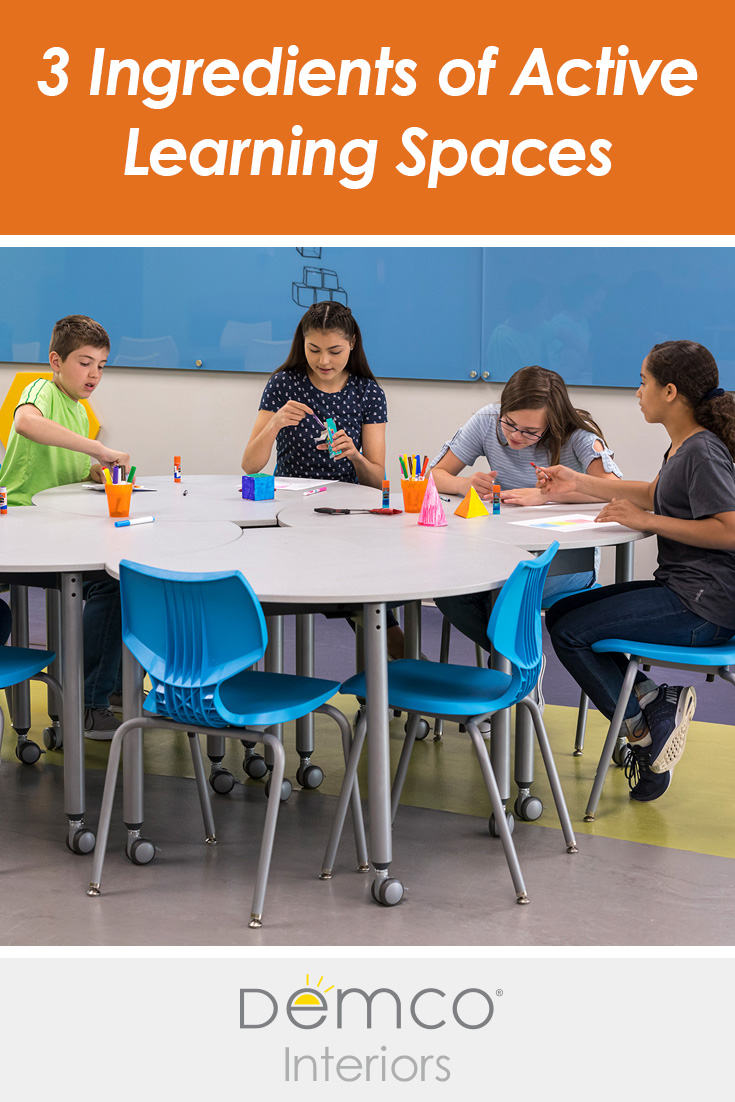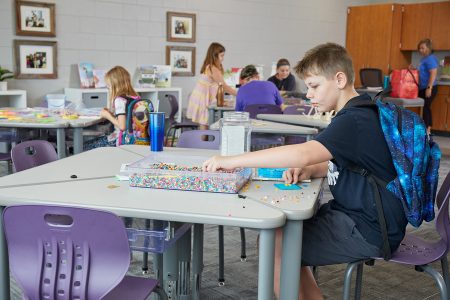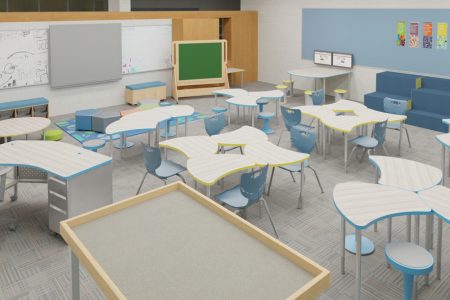Yes, flexibility matters.
Yes, desks and rows are a part of the problem.
When I answer these questions about learning space design in workshops and design sessions, I’m reminded that the answers might be easy, but asking the right questions can be the hard part. Designing active learning spaces and, more importantly, designing for modern users of these spaces requires asking some complex questions. It also means being open to tinkering with solutions to find things that work for the majority of the students in your specific environment. As you design active classrooms, schools, and other learning spaces, continue to think about these three main ingredients and ask yourself these questions.
Ingredient 1: Mindset
Do you have a designer’s mindset?
It is much easier to decorate your space, take a bunch of pictures, and celebrate it on social media than it is to build a design process in your learning space. When you use a design process, you make intentional choices based on observation, feedback, and formative data.
Instead of asking yourself whether or not your space looks great, ask yourself whether or not students are giving you verbal and nonverbal feedback that the space is supporting their social-emotional and academic growth.
What is the hallway view of your space?
Once we are in a space, we often lose sight of the realities of it. It is essential to look for fresh ways to see your familiar space. Consider standing across the hall and looking into the room that you are designing. This is the view most people in the building will have. What story does it tell? You can also stand on a chair or sit on the floor to get a new perspective on the view of your classroom.
Instead of asking yourself what your classroom looks like for students, ask yourself what the perception of the classroom is from 1 foot off the ground, 9 feet in the air, or from 30 feet away in the hallway.
Ingredient 2: Perimeter
How can I add by subtracting?
The key to a great learning space is optimizing the volume of items in the room. This includes the learning resources and inspiration found on the walls of the space. Too often, we put items on the walls and they remain on the walls without an intentional decision. We need to ask ourselves whether they are supporting the learning mission of the space or just diverting the attention of students.
Instead of asking the question about what needs to go on the walls of the classroom, ask yourself which items have become invisible or are starting to blend into the background and be potentially distracting to students.
What are my classroom design elements?
It’s important to intentionally consider elements like colors, fonts, spacing, and volume in order to create a coherent classroom design. Learning environment designers pick font groups that ease stress and anxiety. They look to incorporate a calming color palette into their design. They consider the spacing between items on the walls, and they continuously think about the volume of items on the perimeter of the room.
Instead of asking what can be added to the room to support learning, ask yourself how you can build coherence among the items that you’ve intentionally chosen for the room.
Ingredient 3: Floor Plan
How can I incorporate more student choice into our learning space?
This ingredient is the one that costs the most, as mindset and perimeter are often filled with free ideas, but the design of the layout dictates the energy, movement, and mission of a classroom.
Rarely do educators offer the right volume of student choice in a learning space. This is because the variables can be different from class to class, day to day, and hour to hour. However, allowing students more choice in how and where they learn is a central element to achieving greater engagement and joy in the classroom.
Instead of asking if your students could benefit from more choice, ask what other areas of choice should be considered to maximize the learning of all students.
Who owns the space?
Thinking about a learning space as the stage for students to showcase their excellence can begin to shift the implicit ownership perceptions away from the teacher and toward the learners. Educators should be asking about whether their traffic flow supports learning and whether their design is accessible and inclusive for all learners. Too many students feel uncomfortable in spaces because they have no voice on how to shift the space to help them. This discomfort makes students feel like they rent space between the bells. Be explicit with students that the space is their space for learning.
Instead of asking whether you are sharing the space well with students and other adults, ask whether or not you are empowering students to feel a true sense of ownership in the space.
The answers around learning space design are easy when we are asking first-order questions, but the complexity of the work and the need to be deeply intentional grows geometrically when we push to questions without obvious answers. Use these questions to consider how you can examine all of the ingredients of active learning in pursuit of deeper answers surrounding learning space design.
Dr. Robert Dillon
Latest posts by Dr. Robert Dillon (see all)
- How to Manage Your Active Classroom - April 22, 2020
- Answers to Your Questions About Effective Library and Classroom Design - April 2, 2020
- How to Measure the Success of Your New Learning Space Design - March 3, 2020
- How to Get Your Community and Staff Invested in Redesigning Your Learning Spaces - January 13, 2020
- 3 Ingredients of Active Learning Spaces - October 16, 2019





